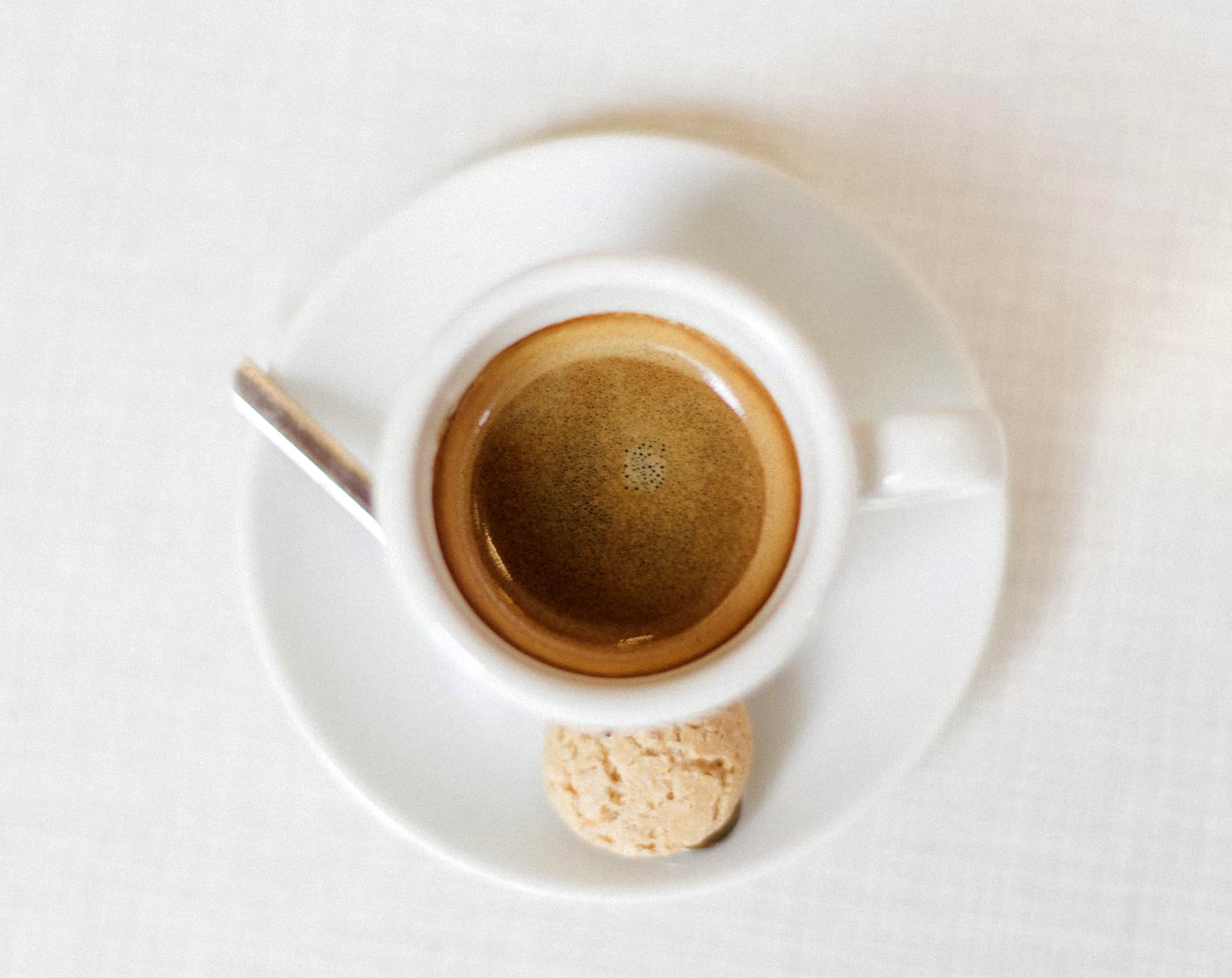Why Is Coffee Called Java?
Coffee is also called “Java” because it comes from the Indonesian island of Java. The origin of coffee can be traced back to Ethiopia, where it was first discovered in the 9th century. From there, it spread to other parts of the world, including Arabia, Europe, and parts of Indonesia. During the 1600s, the Dutch East India Company introduced coffee throughout Southeast Asia and a large island called Java, where it’s played a significant role in coffee production ever since.
Coffee has a variety of names. Some, like “Espresso”, refer to how the coffee is made. While others, like “Mocha” and “Latte,” refer to what’s in the beverage. Still others, like “Java,” refer to where the coffee comes from and/or its history.
As coffee spread throughout the world, the term “Java” was adopted by more and more people. It was first used in reference to coffee originating from the island, however today it’s become a generic term used to describe all types of coffee.
Coffee is one of the most popular beverages in the world with millions of cups consumed every day. However, few people know the fascinating history behind this beloved drink and how it got its name.
In this article we’ll discuss why coffee is also called “Java” and provide a brief overview of its history.
Coffee Is Grown On Java Island
Coffee has been grown on the Indonesian island of Java for over 400 years since it was first introduced by the Dutch East India Company in the 1600s. Much of the island’s bean production still comes from estates that were built by the Dutch hundreds of years ago.
In the 1880s, coffee leaf rust destroyed the majority of the arabica trees on the island. Producers substituted their arabica trees with liberica and then robusta which are more resistant to leaf rust. However their bean traits aren’t as desirable as arabica. Because of the switch, coffee produced by the newer trees are typically used in lower-quality, commercial-grade coffees rather than in specialty-grade products.
Five plantations on the island still grow coffee arabica. These plantations produce a high grade product that meets the standards of specialty-grade coffees. The coffee produced by these plantations are blended with beans from Mocha and Yemen to produce Mocha-Java blends.
Some plantations age their coffees for up to three years, which is called “monsooning”. This creates a milder, less acidic coffee.
The History Of Coffee From Java
Coffee originated in Ethiopia, where it was first discovered in the 9th century. According to legend, a young goatherd named Kaldi noticed that his goats became energized after eating the berries of a certain tree. Curious, he tried the berries himself and found that they had a similar effect on him. He shared his discovery with the local monks, who used the berries to make a beverage that helped them stay alert during long prayer sessions.
From Ethiopia, coffee spread to other parts of the world, including Arabia, where it was first roasted and brewed in the 15th century. The popularity of coffee quickly spread throughout the Arab world, and coffee houses became a popular gathering place for socializing and discussing politics and culture.
In the 16th century, coffee was introduced to Europe. It quickly became a fashionable drink among the wealthy and aristocratic classes.
During the 16th century, coffee was also was introduced to Java, an Indonesian island that was a Dutch colony at the time. The Dutch East India Company, which controlled much of the spice trade in the region, saw Java’s tropical climate and fertile soil as an ideal location for bean production. They began to cultivate coffee trees on the island, and Java soon became one of the largest producers of coffee beans in the world.
Java’s unique climate and soil conditions make it an ideal location for growing beans. The island’s volcanic soil is rich in nutrients, which gives Java coffee its distinctive flavor. The island’s tropical climate also provides ideal growing conditions for coffee trees, which require a consistent temperature and humidity to thrive.
Today, Java remains an important producer of coffee, and its beans are highly sought after by connoisseurs around the world.
Coffee Comes From Arabia
The Ottomans, who lived across Arabia in the 15th century, controlled almost all of the spice trade throughout Europe and Asia. One of the products in most demand at the time was coffee. The coffee blend that was made in Arabia was referred to as Mocha, which referred to its origins in Yemen.
To maintain their monopoly, brewers would de-fertilize the seeds to prevent other traders from making a profit on their product. And in 1536, they tried to ban all exports of coffee seedlings from Arabia. But the Dutch East India Company ignored the Ottomans ban and smuggled coffee seedlings out of Arabia.
The coffee known today as Arabica, is actually a decedent of the the Arabian drink known as Coffea Arabica.
In the 1600s, the Dutch East India Company established colonies in both India and the Indonesian island of Java. With their smuggled seedlings, they first first tried to start growing coffee in India. However these attempts failed because coffee trees grow best in tropical areas.
The company then tried growing their coffee trees on Java island which had rich volcanic soil and a tropical climate perfect for growing beans. These plantations were so successful, that coffee quickly became one of the most sought-after and profitable goods the Dutch East India Company sold.
Because the coffee beans from Java became so widely spread, coffee started to be called “Java”.
Why Is Java A Nickname For Coffee?
Java is a nickname for coffee because it’s been grown on the Indonesian island of Java for over 400 years. Java is an Indonesian island that’s known for its fertile soil and tropical climate. This make it an ideal location for growing coffee beans. The name “Java” is derived from the Javanese language, which is spoken by the island’s inhabitants. The Javanese people call their island “Jawa,” which is also the name used in Indonesian.
The Dutch East India Company, which controlled much of the spice trade in the region, began to cultivate coffee trees on Java in the 16th century. Java soon became one of the largest producers of coffee in the world. Its beans were highly prized for their unique flavor and quality. As a result, the term “Java” became synonymous with high-quality coffee.
There are several reasons why coffee is associated with Java.
- Firstly, the island has a long history of coffee production
- Its beans are known for their distinct flavor and quality
- Java was one of the first places outside of Arabia to cultivate coffee trees
- The island played a significant role in the spread of coffee around the world
- The term “Java” has become a nickname for high-quality coffee
- Many coffee roasters and producers use the name to denote premium blends and single-origin coffees
The term “Java” has become synonymous with high-quality coffee due to the island’s long history of coffee production and the unique flavor profile of its beans.
The Impact Of Java On Coffee Culture
Java has been a significant player in the global coffee market for centuries. In the 19th century, the island was the world’s largest producer of coffee. Its beans were highly prized for their unique flavor and quality. Today, the island remains an important producer of coffee, and its beans are still highly sought after by connoisseurs around the world.
The island of Java is known for producing two main types of bean. The “Java Arabica” and “Java Robusta”.
- Java Arabica is grown at high altitudes on the island. This gives it a mild, smooth flavor with hints of chocolate and nuts.
- Java Robusta is grown at lower altitudes and has a stronger, more bitter flavor.
Both varieties are highly prized by aficionados for their unique flavor profiles.
Java has had a significant influence on coffee culture around the world. The island’s long history of coffee production has helped to shape the global market, and its beans are often used in premium blends and single-origin coffees.
Java’s unique flavor profile has also contributed to the development of different coffee roasting styles and brewing methods, as producers seek to highlight the distinct characteristics of the beans.
The island’s role in bean production has also influenced the way people consume coffee. Coffee houses, which originated in Arabia and spread to Europe, became popular gathering places for socializing and discussing politics and culture. Similarly, Java’s coffee plantations became social and cultural hubs, where coffee was enjoyed alongside music, dance, and other forms of entertainment.
Why Is Java Represented By A Coffee Cup?
Java is a programming language and computing platform released by Sun Microsystems in 1995. It runs on billions of devices, including notebook computers, mobile devices, gaming consoles, tablets, medical devices and many others. The Java logo is a blue coffee cup with red steam above it. The design recognizes the engineers who developed the language and all the coffee they drank while doing it. Which was primarily made from Java coffee beans.
Summary: Why Is Coffee Called Java?
Coffee is also called “Java” because it comes from the Indonesian island of Java. The origin of coffee can be traced back to Ethiopia, where it was first discovered in the 9th century. From there, it spread to other parts of the world, including Arabia, Europe, and parts of Indonesia. During the 1600s, the Dutch East India Company introduced coffee throughout Southeast Asia and a large island called Java, where it’s played a significant role in coffee production ever since.
Coffee has a variety of names. Some, like “Espresso”, refer to how the coffee is made. While others, like “Mocha” and “Latte,” refer to what’s in the beverage. Still others, like “Java,” refer to where the coffee comes from and/or its history.
As coffee spread throughout the world, the term “Java” was adopted by more and more people. It was first used in reference to coffee originating from the island, however today it’s become a generic term used to describe all types of coffee.
Coffee is one of the most popular beverages in the world with millions of cups consumed every day. However, few people know the fascinating history behind this beloved drink and how it got its name.
If you have any questions or comments about the article, email any time.























